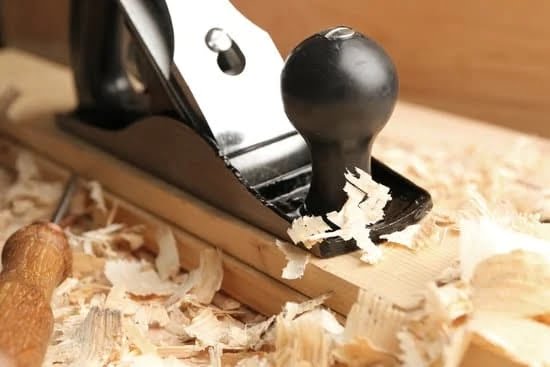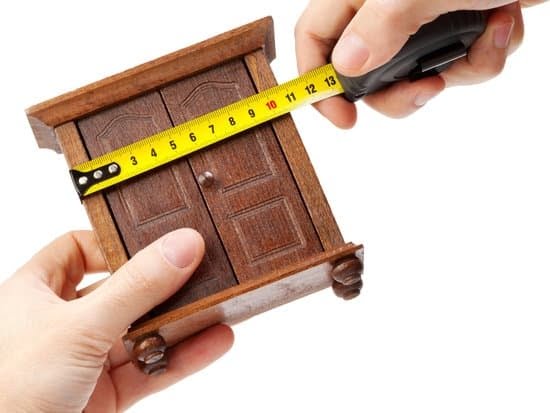Woodworking lathe tools are essential for creating beautiful, intricate woodwork pieces. But what exactly are woodworking lathe tools called? In this article, we will explore the different types of woodworking lathe tools and their purposes, from essential equipment for beginners to advanced tools for professional woodworkers. Whether you’re just starting out or looking to expand your collection, understanding the basics of woodworking lathe tools is crucial for mastering the art of woodturning.
Woodworking lathe tools come in various shapes and sizes, each serving a specific purpose in shaping and smoothing wood. From gouges and chisels to scrapers and parting tools, there is a wide range of equipment to choose from. In this article, we will delve into the essential woodworking lathe tools for beginners as well as the must-have advanced equipment for pro woodworkers. Understanding the different types of woodworking lathe tools is the first step in creating stunning woodturned projects.
Whether you’re a hobbyist or a professional woodworker, safety should always be a top priority when using woodworking lathe tools. We will also discuss important safety tips to keep in mind when working with these powerful cutting instruments.
Additionally, we’ll explore the importance of quality woodworking lathe tools and provide tips for maintaining and caring for your equipment to ensure longevity and optimal performance. By understanding the basics of woodworking lathe tools, you can elevate your craft and create stunning woodturned masterpieces.
What Are Woodworking Lathe Tools
Woodworking lathe tools come in a variety of shapes and sizes, each designed for specific tasks in woodturning. From roughing to finishing cuts, there is a specific tool for every step of the process. One common type of woodworking lathe tool is the gouge, which is used for shaping and smoothing wood. Gouges come in different sizes and can be used for creating coves, beads, and other decorative details on turned wood.
Another essential woodworking lathe tool is the skew chisel, which is known for its versatile cutting abilities. It is commonly used for creating smooth finishes and fine details on the turned wood. The skew chisel can also be used for planing cuts and peeling cuts due to its flat cutting edge.
Parting tools are another type of woodworking lathe tool that are used specifically for separating pieces of wood. They have a very thin profile that allows them to cut through wood without creating too much waste. Parting tools are commonly used for making tenons or dovetails on spindle work, as well as cutting grooves or small coves.
One cannot forget about the bowl gouge when discussing woodworking lathe tools. This type of gouge is specifically designed for hollowing out bowls and other concave shapes in woodturning projects. Bowl gouges have a deeper flute than standard gouges, allowing them to remove larger amounts of stock from the inside of the turning piece.
| Woodworking Lathe Tool | Primary Use |
|---|---|
| Gouge | Shaping and smoothing wood; creating coves and beads |
| Skew Chisel | Creating smooth finishes; fine details; planing cuts; peeling cuts |
| Parting Tool | Separating pieces of wood; making tenons or dovetails; cutting grooves or small coves |
| Bowl Gouge | Hollowing out bowls and other concave shapes in woodturning projects. |
Essential Woodworking Lathe Tools for Beginners
Woodworking lathe tools are essential for creating intricate and beautifully crafted wood pieces. For beginners, it can be overwhelming to figure out which tools are necessary to get started. Here, we will explore the essential woodworking lathe tools that every beginner should have in their workshop.
Chisels
Chisels are one of the most fundamental woodworking lathe tools for beginners. They come in a variety of shapes and sizes, each serving a different purpose. The most commonly used chisels include spindle gouges, bowl gouges, and parting tools. These are used for shaping and hollowing out wood to create intricate designs and forms.
Calipers
Calipers are precision measuring tools that are indispensable for woodturning. They are used to measure the diameter of the turning piece accurately, ensuring that it meets the desired specifications. For beginners, having a set of calipers is crucial for achieving precise results in their woodturning projects.
Mallet
A mallet is an essential tool for woodworking lathe beginners when using chisels or other cutting tools. It is used to apply force to the end of the chisel or gouge while turning. This tool helps to carve out material from the workpiece without causing damage or injury to the woodturner.
As beginners, having these essential woodworking lathe tools in your workshop will provide you with a solid foundation to start exploring the art of woodturning. By familiarizing yourself with these basic tools and their uses, you will be well on your way to mastering the craft of woodworking lathe techniques.
Advanced Woodworking Lathe Tools
Pro woodworkers require a different set of woodworking lathe tools to take their craft to the highest level. These advanced tools are designed to meet the demands of professional woodworking projects, providing precision, efficiency, and versatility. From specialty chisels to innovative cutting attachments, these must-have equipment for pro woodworkers are essential for creating intricate and sophisticated wood pieces.
One of the most important advanced woodworking lathe tools for pro woodworkers is the bowl gouge. This tool features a deep flute and longer handle, allowing the user to hollow out bowls and vessels with precision and control.
The spindle roughing gouge is another essential tool that enables pro woodworkers to efficiently shape large spindle blanks into round forms, saving time and effort during turning. Additionally, parting tools with a thicker blade are crucial for making clean cuts when separating finished pieces from the lathe.
Another must-have equipment for pro woodworkers is the skew chisel, which is used for smooth finishing cuts and creating delicate details on turned items. Its flat edge enables precise shaping and smoothing of spindles and other cylindrical workpieces. Meanwhile, carbide-tipped tools such as the carbide insert cutter provide long-lasting sharpness and durability compared to traditional high-speed steel cutting tools.
For pro woodworkers looking to enhance their craft further, invest in specialized accessories like steady rests, live centers, and indexing systems which can improve stability, accuracy, and flexibility during turning processes. Ultimately, having access to these advanced woodworking lathe tools can elevate the quality and intricacy of professional woodwork projects.
Understanding the Purpose of Each Woodworking Lathe Tool
Woodworking lathe tools are an essential part of any woodworker’s toolkit, and understanding the purpose of each tool is crucial to mastering the art of woodworking. The various woodworking lathe tools are designed for specific functions, and using them correctly can significantly impact the outcome of your projects. From cutting and shaping to finishing, each tool plays a vital role in the woodworking process.
One of the most common woodworking lathe tools is the chisel, which comes in various shapes and sizes such as gouges, scrapers, parting tools, and skew chisels. These tools are used for cutting, shaping, and smoothing wood on the lathe. Another important tool is the skew chisel, which is used for detailed finishing work and creating smooth surfaces on wood.
In addition to chisels, other essential woodworking lathe tools include carving tools for decorative details, gouges for hollowing out wooden objects, parting tools for cutting off finished pieces from the lathe, and scrapers for refining surfaces. Each tool has its own unique function and requires skillful handling to achieve desired results. Understanding how to use these tools effectively is critical for anyone working with a lathe.
| Woodworking Lathe Tool | Purpose |
|---|---|
| Chisel | Cutting, shaping, smoothing wood |
| Gouge | Hollowing out wooden objects |
| Parting Tool | Cutting off finished pieces from the lathe |
Safety Tips When Using Woodworking Lathe Tools
Woodworking lathe tools are essential for creating detailed and intricate wood pieces. However, it is important to prioritize safety when using these tools to prevent accidents and injuries. Here are some safety tips to keep in mind:
Wear the Proper Safety Gear
When using woodworking lathe tools, it is crucial to wear the appropriate safety gear to protect yourself from any flying debris or potential injuries. This includes safety goggles to protect your eyes from wood chips, gloves to protect your hands, and ear protection to block out loud noises.
Secure the Workpiece
Before working on the lathe, ensure that the workpiece is securely fastened in place using a chuck or faceplate. A loose workpiece can cause dangerous vibrations and even fly off the lathe, causing injury. Always double-check that the workpiece is properly secured before starting any woodturning.
Maintain a Safe Distance
When operating woodworking lathe tools, maintain a safe distance from the rotating piece of wood. Avoid wearing loose clothing or jewelry that can get caught in the spinning wood, and never reach over the lathe while it is in operation.
By following these safety tips, woodworkers can enjoy their craft while minimizing the risk of accidents and injuries when using woodworking lathe tools. It is crucial to always prioritize safety in order to have an enjoyable and safe woodworking experience.
The Importance of Quality Woodworking Lathe Tools
Woodworking lathe tools are an essential part of any woodturning project, and the quality of the tools can have a significant impact on the outcome of the work. High-quality woodworking lathe tools are designed to provide better control, precision, and durability, resulting in smoother cuts and finer finishes. In this section, we will explore why investing in quality woodworking lathe tools is crucial for both beginners and experienced woodworkers.
Benefits of Quality Woodworking Lathe Tools
Quality woodworking lathe tools are typically made from high-grade materials such as high-speed steel or carbide, which makes them more durable and long-lasting compared to lower-quality tools. These materials also allow the tools to maintain a sharp cutting edge for a longer period, reducing the need for frequent sharpening or replacement. Additionally, high-quality woodworking lathe tools are precision-engineered to provide better balance and control, allowing woodworkers to achieve smoother cuts with minimal effort.
Impact on Woodturning Projects
The use of quality woodworking lathe tools can significantly impact the overall quality of woodturning projects. The precision and sharpness of these tools enable woodworkers to create intricate designs, smooth curves, and fine details with ease.
Additionally, quality woodworking lathe tools produce cleaner cuts with minimal tear-out, resulting in a finer finish on turned pieces. Whether it’s creating spindle work or turning bowls and platters, investing in high-quality lathe tools can elevate the craftsmanship and aesthetics of the final product.
Long-Term Cost Savings
While quality woodworking lathe tools may come with a higher initial cost, they often offer long-term cost savings due to their durability and performance. Unlike lower-quality tools that may wear out quickly or require frequent sharpening/replacement, high-quality lathe tools can withstand heavy use and maintain their cutting edge over time.
This means that woodworkers can rely on these tools for years without having to constantly purchase new ones or invest in costly sharpening equipment. Ultimately, investing in quality woodworking lathe tools is not just about achieving better results but also about saving time and money in the long run.
Tips for Maintaining and Caring for Woodworking Lathe Tools
Woodworking lathe tools are essential for any woodworking project, and it is important to know how to properly maintain and care for them in order to ensure their longevity and optimal performance. Here are some tips for maintaining and caring for woodworking lathe tools:
Clean Your Tools Regularly
One of the most important aspects of maintaining woodworking lathe tools is to clean them regularly. After each use, make sure to remove any wood chips, dust, or debris from the tools. This can be done using a brush or compressed air to ensure that the cutting edges remain sharp and effective.
Sharpening and Honing
Proper sharpening and honing of woodworking lathe tools are crucial for achieving clean cuts and smooth finishes on your wood pieces. Invest in a high-quality sharpening system or stones specifically designed for sharpening lathe tools, and make it a habit to regularly hone the edges to keep them sharp.
Store Your Tools Properly
When not in use, it is important to store your woodworking lathe tools properly to prevent damage or dulling of the cutting edges. Consider investing in a tool rack or organizer specifically designed for lathe tools to keep them organized and protected when not in use.
By following these maintenance tips, you can ensure that your woodworking lathe tools remain in top condition, allowing you to produce high-quality wood pieces consistently.
Conclusion
In conclusion, mastering the art of woodworking lathe tools requires understanding the different types of equipment and their specific purposes. Whether you are a beginner or a seasoned woodworker, having the essential tools is crucial for creating high-quality wood pieces. From chisels to gouges to scrapers, each tool has its specialized function in shaping and finishing wood on a lathe.
It is essential to prioritize safety when using woodworking lathe tools. Always wear protective gear such as goggles and gloves, and ensure that the workpiece is properly secured before starting the lathe. Additionally, it is important to invest in quality tools that are durable and well-crafted. By maintaining and caring for your woodworking lathe tools regularly, you can prolong their lifespan and ensure optimal performance.
To truly master woodworking lathe tools, continuous practice and learning are essential. Experiment with different techniques and explore the capabilities of each tool. Seek guidance from experienced woodworkers or take classes to improve your skills. With dedication and patience, you can elevate your craftsmanship and create stunning wood pieces using woodworking lathe tools.
In summary, mastering the art of woodworking lathe tools entails not only understanding the different types of equipment but also prioritizing safety, investing in quality tools, and continuously improving one’s skills through practice and learning. These essential steps will enable you to unleash your creativity and achieve remarkable results in woodworking using lathe tools.
Frequently Asked Questions
What Is the Name of Lathe Tools?
The name of lathe tools can vary depending on their specific function, but some common lathe tools include the roughing gouge, spindle gouge, skew chisel, parting tool, and bowl gouge.
What Are the Four Basic Tools You Need When Using the Wood Lathe?
When using the wood lathe, the four basic tools you need are the roughing gouge for initial shaping and roughing out the project, the spindle gouge for shaping curves and details on spindles, the skew chisel for smooth cuts and finishing work, and the parting tool for cutting off finished work from the lathe.
Which Lathe Is Used for Woodworking?
The lathe used for woodworking is typically referred to as a wood lathe. This type of lathe is specifically designed for turning wood to create various projects such as bowls, spindles, furniture legs, and other decorative items. Wood lathes come in different sizes and can accommodate a wide range of woodworking projects.

Hi everyone! I’m a woodworker and blogger, and this is my woodworking blog. In my blog, I share tips and tricks for woodworkers of all skill levels, as well as project ideas that you can try yourself.





